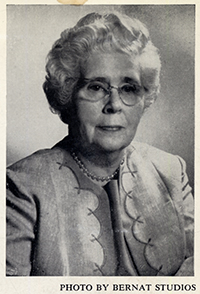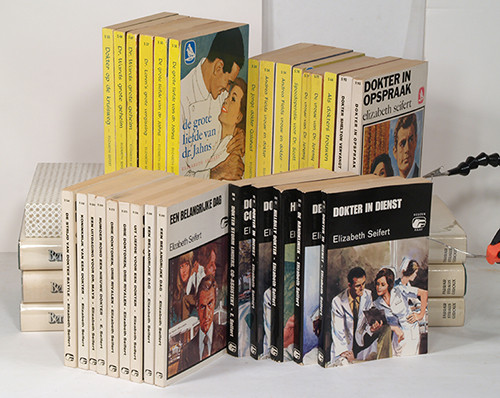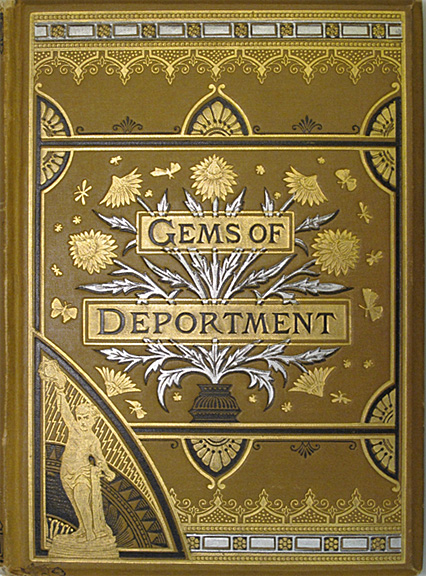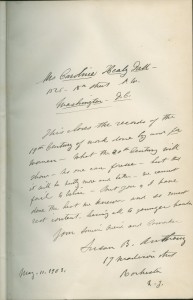New Medical Romance Collection at Schlesinger
ø
 Schlesinger’s growing collection of romance fiction now includes the complete works of Missouri writer Elizabeth Seifert (1897-1983), internationally-bestselling author of more than 80 medical romances.
Schlesinger’s growing collection of romance fiction now includes the complete works of Missouri writer Elizabeth Seifert (1897-1983), internationally-bestselling author of more than 80 medical romances.
As recounted in the catalog of rare book dealer Between The Covers, Seifert completed 18 months of medical school at Washington University but was denied degree candidacy and left, marrying and becoming a mother.
Seifert wrote her first romance, Young Doctor Galahad, at age 40, when her husband John Gasparotti, an injured veteran of the First World War, was no longer able to work. The novel won the $10,000 Redbook Magazine prize for first novels in 1938, and her career was launched. Her works were translated into French, German, Dutch, Spanish, Swedish, and Italian, and were especially popular in England.
Schlesinger’s collection, which was assembled by the author, contains 344 volumes — every American and overseas edition of her works, many inscribed by her. In addition, 20 historical romances by her sister, Shirley Seifert (1888-1971) are included, notably The Wayfarer, nominated for the Pulitzer Prize in 1938 (a signal year for the Seiferts!). Shirley Seifert was one of six founders of the St. Louis Writers Guild; her success may have encouraged her younger sisters Elizabeth and Adele (Adele Seifert wrote mysteries).

Photograph by Corey Bechelli for Between The Covers Rare Books
Elizabeth Seifert’s oeuvre gives a broad view of a half-century of popular perceptions of medicine and hospitals, of male and female doctors (several of her main characters are women struggling to gain acceptance as doctors), and of romantic relationships with medical professionals. Her novels were praised for their credible medical details, and her medical training was often cited in cover blurbs.
Besides tracing the writing careers of two very successful women, the Seifert collection documents the history of romance publishing, as it includes so many editions of each title, and also presents a wide array of book cover art and book design, spanning 45 years.
The collection complements two collections of nurse romances recently added to Schlesinger, and offers a window into the popular glorification of doctors that the women’s movement would begin to pick apart in the 1960s.
— Marylène Altieri, Curator of Books and Printed Materials

Photograph by Corey Bechelli for Between The Covers Rare Books



